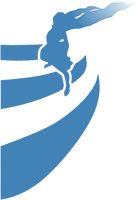D’une réalité à l’autre, la créativité à l’épreuve…
Samenvatting
à l’appui de la pensée clinique, ce travail tentera de suivre le fil de la créativité en traversant plusieurs champs apparemment divergents. Laissant de côté une perspective exhaustive, nous essayerons, à la manière d’un travail de composition, de faire tenir ensemble plusieurs approches assez différentes de la réalité, tout en gardant ce fil rouge de l’espace potentiel, tel que Winnicott le définit. à partir d’une situation clinique, celle de Deniz, un enfant de 10 ans accroché au réel, du fait de son histoire traumatique, nous envisagerons ainsi les conséquences du trauma sur la créativité, notamment du côté des impasses pour la psyché. Ensuite, nous pourrons considérer le champ de la création artistique pour tenter d’approcher les modalités de la fonctionnalité de l’espace potentiel. Cela offrira la possibilité d’éclairer la finalité du travail du psychanalyste d’une part, et de considérer la créativité comme un assez bon indicateur de la vivacité de la psyché. Enfin, il sera question du monde actuel, qui confronte de plus en plus à une nouvelle modalité de rapport au réel. Nous nous interrogerons sur ces nouvelles transformations, proches parfois du forçage, notamment sur l’impact dans l’espace culturel, lorsque la quête apparaît sans limites. Dans quelle mesure la place pour la créativité n’est-elle pas menacée dans ces réalités dites augmentées ?
Van de ene werkelijkheid naar de andere, creativiteit naar de test …
Ter ondersteuning van het klinische denken zal dit werk proberen de draad van creativiteit te volgen door verschillende schijnbaar uiteenlopende gebieden te kruisen. Afgezien van een uitputtend perspectief zullen we, op de manier van compositioneel werk, proberen om verschillende heel verschillende benaderingen van de werkelijkheid samen te houden, terwijl we deze rode draad van potentiële ruimte behouden, zoals Winnicott het definieert. Uitgaande van een klinische situatie, die van Deniz, een 10-jarige kind dat aan de werkelijkheid is vastgehaakt, vanwege zijn traumatische geschiedenis, zullen we dus de gevolgen van trauma op creativiteit in overweging nemen, vooral aan de kant van dode doelen voor de psyche. Dan kunnen we het veld van de artistieke schepping overwegen, om te proberen de modaliteiten van de functionaliteit van de potentiële ruimte te benaderen. Dit zal de mogelijkheid bieden om enerzijds het doel van het werk van de psychoanalist te verduidelijken, en om creativiteit te beschouwen als een redelijk goede indicator van de levendigheid van de psyche. Tenslotte zal het een kwestie van de huidige wereld zijn, die steeds meer geconfronteerd wordt met een nieuwe modaliteit van relatie tot de werkelijkheid. We zullen ons afvragen wat deze nieuwe transformaties zijn, soms bijna gedwongen, vooral over de impact in de culturele ruimte, wanneer de zoektocht zonder grenzen verschijnt. In welke mate wordt de plaats voor creativiteit niet bedreigd in deze zogenaamde ‘augmented realiteiten’?
From a reality to another, testing creativity…
In support of clinical thinking, this work will attempt to follow the thread of creativity by crossing several divergent fields. Leaving aside an exhaustive perspective, we will try, as for a composition work, to hold together several quite different approaches of reality, while keeping this thread of the potential space, as Winnicott defines it. Starting from a clinical situation, that of Deniz, a 10 year old child, clinging to reality because of his traumatic experience, we will thus consider the consequences of trauma on creativity, especially on the side of the dead ends for the psyche. Then, in order to approach the modalities of the functionality of the potential space, we can consider the field of artistic creation. This will offer the possibility to underline the finality of the psychoanalyst’s work on the one hand, and, on the other hand, to consider creativity as a fairly good indicator of the liveliness of the psyche. Finally, we will discuss about the current world, which is increasingly confronted with a new kind of link to reality. What about these new transformations close to forcing, especially on the impact in the cultural space, when the quest appears without limits? Is the place for creativity threatened in these so-called augmented realities?
